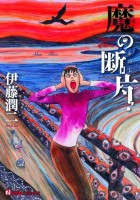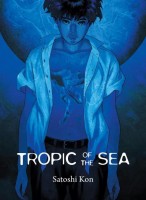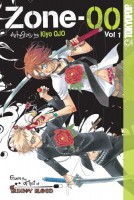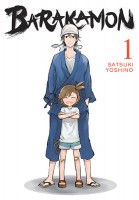Once again, the fifth volume of Monster Musume tops the New York Times’ Manga Bestseller list, followed by the latest installments of Fairy Tail, Attack on Titan, and xxxHolic Rei, CLAMP’s sort-of sequel to xxxHolic.
Will the Kickstarter campaign for Ludwig B. reach its goal of $21,000? Johanna Draper Carlson investigates.
The Manga Bookshelf gang discuss next week’s big releases, from Master Keaton to Mobile Suit Gundham.
Look out, Wallace and Grommit—Moyocco Anno has launched an Indie GoGo campaign to adapt her manga Diary of O’Chibi into a stop-motion film.
Kodansha recently posted a brief video “trailer” for Noriko Ootani’s josei series Sukkute Goran, and it’s lovely.
Reviews: Ash Brown discusses Frederick Schodt’s landmark 1983 book Manga! Manga! The World of Japanese Comics. Over at Anime News Network, Shaenon Garrity devotes the latest House of 1000 Manga column to Taiyo Matsumoto’s GoGo Monster.
Leroy Douresseaux on vol. 20 of Arata: The Legend (The Comic Book Bin)
Jordan Richards on vol. 1 of Assassination Classroom (Adventures in Poor Taste)
Rachel Tougas on vol. 1 of Assassination Classroom (Rachel Loves Comics)
Noel Thorne on vol. 1 of Batman: The Jiro Kuwata Batmanga (Comic Ally)
Rebecca Silverman on vols. 1-2 of False Memories (Anime News Network)
Marissa Lieberman on vol. 1 of Food Wars! (No Flying No Tights)
Eric Gaudette on Hellsing (Emertainment Monthly)
Megan R. on In Clothes Called Fat (The Manga Test Drive)
Nick Smith on vol.1 of Kiss of the Rose Princess (ICv2)
Leroy Douresseaux on vol. 9 of Magi: The Labyrinth of Magic (The Comic Book Bin)
Johanna Draper Carlson on vol. 2 of My Love Story!! (Manga Worth Reading)
Johanna Draper Carlos on vol. 2 of Spell of Desire (Manga Worth Reading)
Kate O’Neil on vol. 3 of Sweet Rein (The Fandom Post)
Matthew Warner on vol. 19 of Vampire Knight (The Fandom Post)
Leroy Douresseaux on vol. 8 of Voice Over! Seiyu Academy (The Comic Book Bin)
Rebecca Silverman on vol. 1 of Witchcraft Works (Anime News Network)
Matthew Alexander on vol. 5 of Wolfsmund (The Fandom Post)
Johanna Draper Carlson on vol. 1 of Yukarism (Manga Worth Reading)
Sean Gaffney on vol. 1 of Yukarism (A Case Suitable for Treatment)





